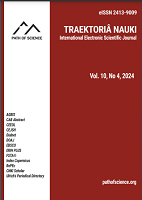Multi-Metal Adsorption of Lead (II), Cadmium (II), and Manganese (II) Ions from Simulated Solution onto HDTMA-Br Modified Dijah-Monkin Bentonite Clay
Multi-Metal Adsorption of Lead (II), Cadmium (II), and Manganese (II) Ions from Simulated Solution onto HDTMA-Br Modified Dijah-Monkin Bentonite Clay
Author(s): Umar Omeiza Aroke, Olukayode Gideon Oloyede, Saidat Olanipekun GiwaSubject(s): Energy and Environmental Studies, Environmental interactions
Published by: Altezoro, s. r. o. & Dialog
Keywords: Adsorption; Analysis of Variance; Response Surface Methodology; Box-Behnken, Dijah-Monkin Bentonite Clay; Hexadecyltrimethylammonium bromide; Multi-metal; Zing-North East Nigeria;
Summary/Abstract: In this study, Dijah-Monkin bentonite clay was modified with a cationic surfactant hexadecyltrimethylammonium bromide (HDTMA-Br) at the level of twice the cation exchange capacity (CEC) and applied in adsorption to obtain the optimal conditions for the removal of lead (II), cadmium (II) and manganese (II) from a solution. The Box-Behnken design matrix comprised particle size of clay, initial metal ion concentration, and contact time as the independent variables, with the heavy metals' adsorption capacities and percentage removals as the responses. The experimental results fit linear models for the adsorption capacity and quadratic models for the percentage removal. Also, only the particle size and initial concentration significantly affected the responses. However, the effect of contact time was significant for cadmium removal, suggesting that the adsorption of cadmium ion on the adsorbent increases with increased contact time; this is due to high cadmium cation hydration energy of -1807 kJ/mol-1 compared to lead and manganese with -1481 kJmol-1 , -1760 kJmol-1 respectively. Furthermore, the model equations for the responses were developed, and the optimum adsorption condition for the multi-metal adsorption that maximised the adsorption capacity and the percentage removal was obtained to be 150 µm particle size, 50 mg/l initial concentration over 171 minutes.
Journal: Traektoriâ Nauki
- Issue Year: 10/2024
- Issue No: 6
- Page Range: 1009-1020
- Page Count: 13
- Language: English

